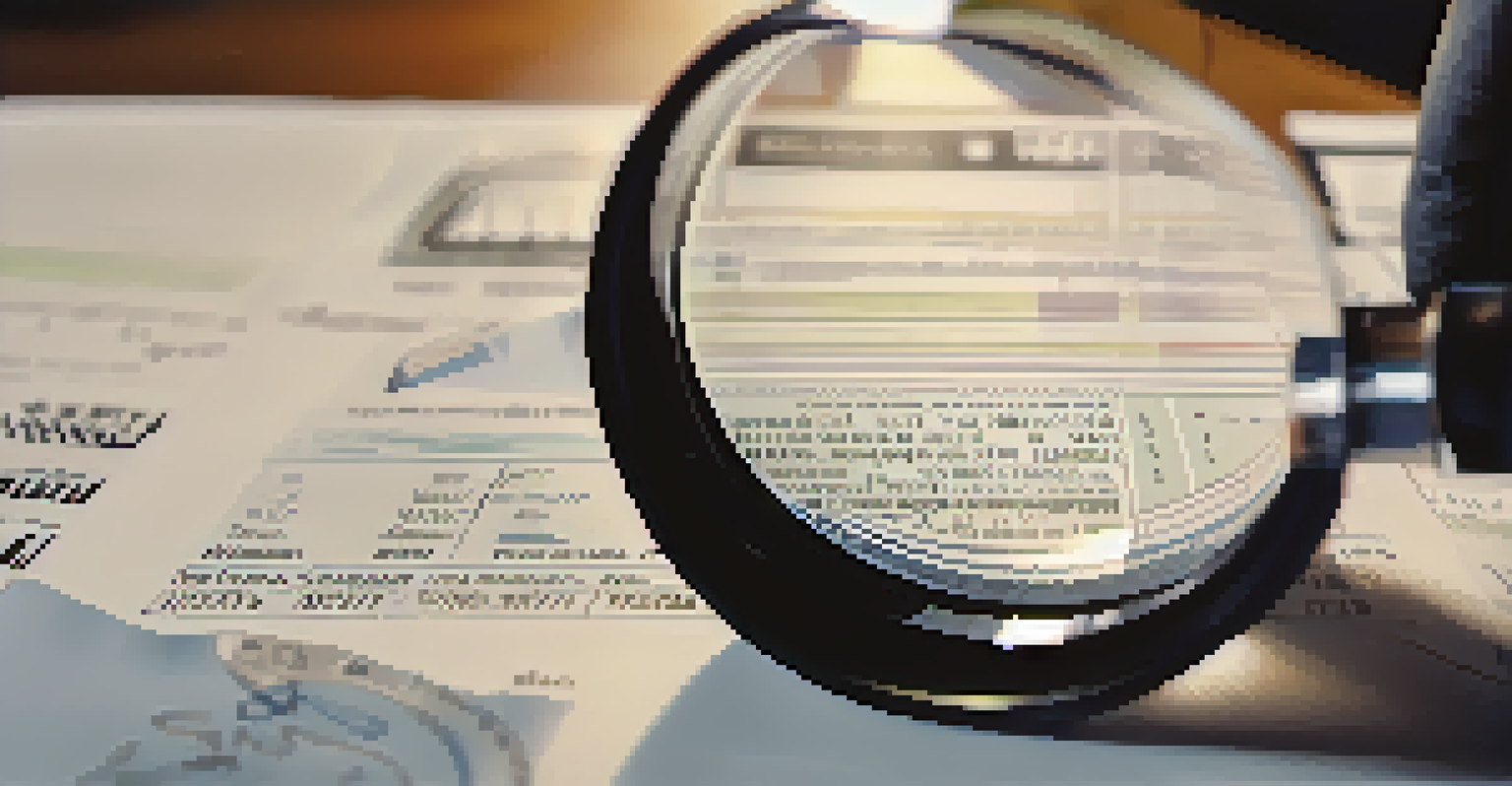Understanding the Balance Sheet: A Complete Overview

What is a Balance Sheet and Why is it Important?
A balance sheet is a financial statement that provides a snapshot of a company's assets, liabilities, and equity at a specific point in time. Think of it as a photograph of your finances, capturing what you own and what you owe. This document is crucial for stakeholders, including investors and creditors, as it helps them assess the financial health of a business.
In accounting, the balance sheet is like a snapshot of your financial situation at a specific point in time.
By analyzing a balance sheet, you can determine a company's liquidity, financial stability, and operational efficiency. For instance, if a business has more assets than liabilities, it indicates a strong financial position. This information can be pivotal when making investment decisions or evaluating potential partnerships.
In essence, the balance sheet is a fundamental tool that allows you to understand the financial structure of a company. It serves as a foundation for other financial statements and is often the first document reviewed by analysts and investors.
Key Components of a Balance Sheet Explained
A balance sheet is divided into three main sections: assets, liabilities, and equity. Assets represent what the company owns, including cash, inventory, and property. Liabilities, on the other hand, are obligations that the company needs to settle, such as loans and accounts payable.

Equity, the third section, reflects the residual interest in the assets after deducting liabilities. It’s essentially what the shareholders own in the company. Understanding these components is crucial, as they provide insights into the company’s operational efficiency and financial leverage.
Balance Sheets Show Financial Health
A balance sheet provides a snapshot of a company's assets, liabilities, and equity, essential for assessing its financial stability.
When these sections are summed up, they must balance out, hence the name 'balance sheet'. This balance is represented by the accounting equation: Assets = Liabilities + Equity. This fundamental principle ensures that every financial transaction is accurately reflected.
Assets: The Building Blocks of a Business
Assets can be categorized into current and non-current assets. Current assets are those expected to be converted into cash within a year, like cash, accounts receivable, and inventory. Non-current assets, such as property, plant, and equipment, are long-term investments that help in generating revenue over time.
The balance sheet is one of the most important financial statements because it provides a clear picture of a company's financial health.
This distinction is important because it helps users of the balance sheet assess the company's liquidity. For example, a company with high current assets relative to current liabilities is in a good position to cover its short-term obligations, which is crucial for maintaining operations.
Additionally, analyzing the asset structure can reveal how well a company utilizes its resources. A healthy balance of current and non-current assets indicates effective management and planning, which can inspire confidence among investors and stakeholders.
Liabilities: Understanding Financial Obligations
Liabilities are divided into current and long-term liabilities. Current liabilities are debts that are due within one year, such as accounts payable and short-term loans, while long-term liabilities include mortgages and bonds payable that extend beyond a year. This classification helps assess the company’s short-term and long-term financial health.
Understanding liabilities is crucial because excessive debt can signal financial risk. For instance, if a company has a high ratio of liabilities to equity, it may indicate that it is overly reliant on borrowed funds, which can be risky during economic downturns.
Key Components: Assets, Liabilities, Equity
Understanding the three main sections of a balance sheet—assets, liabilities, and equity—helps gauge a company's operational efficiency and financial leverage.
Moreover, analyzing liabilities helps stakeholders gauge the company's ability to meet its obligations. A lower liability ratio suggests that the company can handle its debts comfortably, which is a positive sign for investors and creditors alike.
Equity: The Owner's Stake in the Company
Equity represents the owner's claim on the assets after liabilities have been settled. It includes items like common stock, retained earnings, and additional paid-in capital. Essentially, it shows how much of the company is owned outright by shareholders and is a measure of the company's net worth.
Retained earnings, which are profits reinvested in the business rather than distributed as dividends, play a significant role in equity. They can indicate how well a company is performing and how much it values growth versus immediate payouts to shareholders.
Understanding equity is vital for assessing the company's potential for growth. A rising equity figure over time can signal a successful and expanding business, making it an attractive option for investors.
The Relationship Between Balance Sheet and Financial Health
The balance sheet is a key indicator of a company's financial health and can reveal various insights about its performance. A well-structured balance sheet allows stakeholders to assess how well a company uses its assets to generate profits while managing its liabilities effectively.
For instance, analyzing ratios such as the current ratio (current assets/current liabilities) and debt-to-equity ratio (total liabilities/total equity) can provide a clearer picture of liquidity and financial leverage. These ratios help in making informed decisions regarding investments and credit.
Avoid Common Mistakes in Analysis
Context, trend analysis, and attention to accompanying notes are crucial for accurately interpreting balance sheets and making informed decisions.
Ultimately, a healthy balance sheet reflects sound management practices and a company's ability to thrive in competitive markets. Monitoring these financial statements regularly allows for timely adjustments to strategies, ensuring long-term sustainability.
Common Mistakes When Reading a Balance Sheet
One common mistake is overlooking the importance of context. A balance sheet doesn't exist in a vacuum; understanding industry benchmarks and economic conditions is crucial for accurate interpretation. For instance, what may seem like a high debt level might be normal for a capital-intensive industry.
Another misstep is failing to analyze trends over time. A single balance sheet snapshot can be misleading; it's essential to compare it with previous periods to identify patterns and make informed predictions about future performance.

Lastly, many tend to ignore the notes accompanying balance sheets. These notes often provide valuable explanations on accounting methods, potential contingencies, and other factors that can significantly impact the numbers presented. Paying attention to these details can enhance your understanding.
Conclusion: Mastering the Balance Sheet for Better Decisions
Understanding the balance sheet is essential for anyone involved in business, whether you're an investor, a manager, or a curious learner. This powerful tool offers insights into a company's financial health and can guide smarter decision-making.
By grasping the core components—assets, liabilities, and equity—you'll be better equipped to analyze financial performance and make informed choices. Remember, a balance sheet is not just a collection of numbers; it tells the story of a company's journey and potential for growth.
In summary, mastering the balance sheet can lead to enhanced financial literacy, empowering you to navigate the business landscape with confidence. So, the next time you look at a balance sheet, remember that it's more than a document; it's a window into the heart of a business.